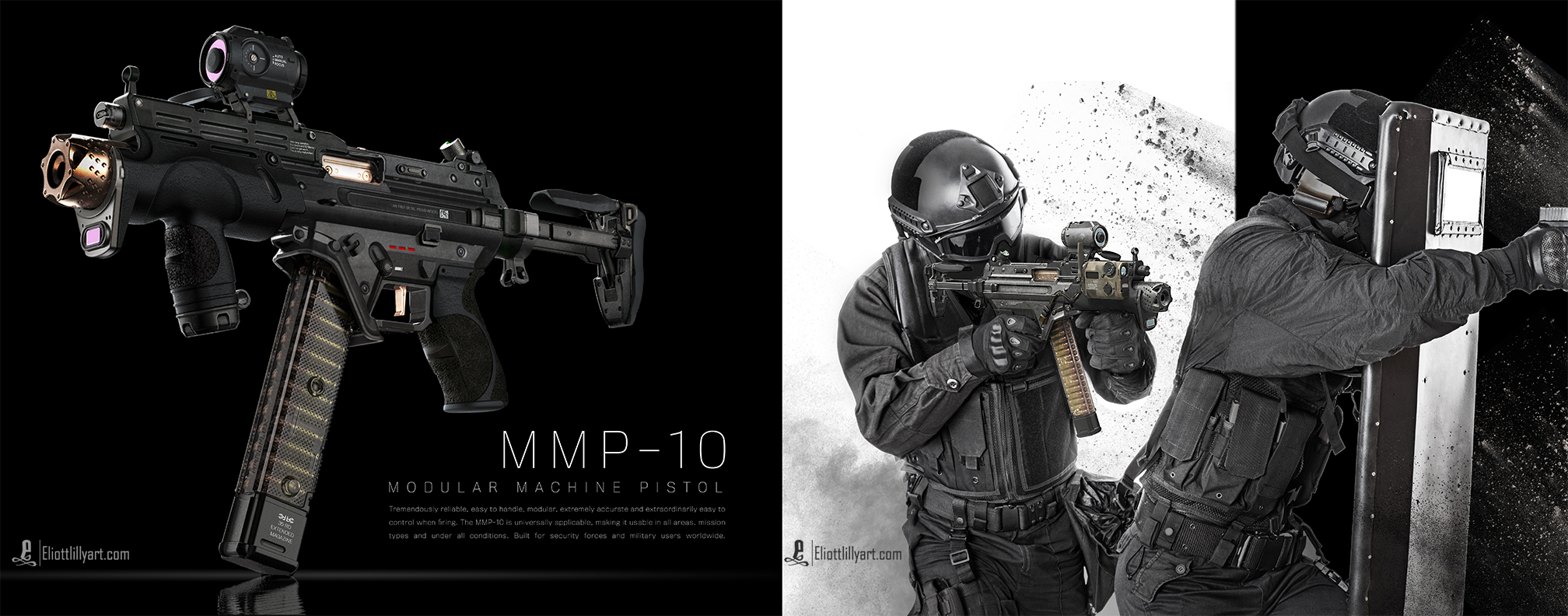Eliott Lilly is someone who knew he wanted to be an artist and worked hard to get there. He took a chance, went out on his own and hasn’t looked back. He’s been part of creating some of the coolest projects, publishing a few books in the process. Learn about his success, how he approaches a project, and why he uses KeyShot.
What sparked your interest in becoming a Concept Artist?
In my third year of college, I stumbled across a book called The Art of The Phantom Menace and it changed my life. I already knew I wanted to be an artist and was enrolled at the School Of Visual Arts, but I was training for illustration and set design. That book opened my eyes to a whole new industry and career path. I quickly scrambled to pivot my portfolio to align with my new focus. I began drawing in markers and pen (since Doug Chiang, my hero, used those tools) and created a whole new body of work. I enrolled in the graduate program at SVA to buy some more time to hone my skills, and by the time I graduated I was industry ready!
What was the turning point in your career? or highlights or your career?
The turning point in my career was when I made a drastic, emotional decision over an obvious, logical one. In my inexperienced youth, I had signed a crappy studio contract that basically said, “anything you make on company time we own, and anything you make on YOUR own time, we own.” This wasn’t a problem for the first three years I worked on the job, but in my fourth, I decided I wanted to write and publish a few books (amongst other projects) but was stopped dead in my tracts when I remembered that stupid clause in my contract.
I approached management with my endeavors and legal concerns but we couldn’t agree on a solution. So, with no backup plan, or future prospects lined up, I quit my $90k per year job to go start my own projects and endeavors. I don’t recommend this for everyone, but it was liberating and the right choice for me. I published The Big Bad World Of Concept Art; An Insider’s Guide For Students (2015), and How To Start Your Career As A Concept Artist (2017). I also entered into the realm of “freelance” and loved it. The freedom to pick and choose my clients, plus set my own schedule and work hours were great. When I started working with Treyarch on Call of Duty: Black Ops III as weapons concept artist (my dream job), I knew I had “arrived”. Best. Decision. Ever!
What is unique about your approach to a project?
When working on a project I pride myself on being able find solutions to potential problems down the pipeline that the client hasn’t even considered yet. This requires me to ask the right exploratory questions and gather as much information as possible, so I am able really to understand what the client truly wants (which doesn’t always line up with what they ask for). It also means I need to communicate (either verbally or visually) in a clear and transparent manner so we are all on the same page. If I do my job right, the client ends up with useable artwork that meets and exceeds all of their expectations.
What is your primary 3D modeling software?
As a concept artist and illustrator I never really wanted to learn how to model. It always seemed slow, tedious and technical. Vertices and planes slow me down and bore me, so I don’t really model. I hack. I hack so well. 3D-Coat is my tool of choice because it allows me to make amazing “models” without having to sacrifice speed or get bogged down in technical know-how. It’s super easy to use, very forgiving and I can blockout 90% of my ideas quickly, while they’re still fresh in my head.
Where in the process do you use KeyShot?
Once I’ve got my “model” blocked out mid-way through the design I like to quickly check my shapes and surfaces in KeyShot to see if they are working as expected. A quick drag and drop of materials and minor light adjustments tell me everything I need to know. I also use KeyShot to take final renders for presentations. I set up the environments, cameras and scene sets, before taking a slew of renders that will be compiled in Photoshop later. As a result, I usually end up making my own wear and tear passes by hand–this is where having multiple renders in the same camera position really comes in handy.
What makes KeyShot an important tool to have?
KeyShot is my savior because the software doesn’t hinder my creativity. It allows me to accomplish so much with little to no training and I LOVE being able to drag and drop materials like a pro. With little effort, I am able to explore a variety of materials, colors, and options and often come across interesting combos I hadn’t considered.
What advice would you give to someone interested in doing what you do?
I’d advise anyone who wants to be a concept artist within the video game and entertainment industries, should find a production pipeline that allows the greatest freedom and ability to create without fumbling over their tools. Never let the tools of the trade dictate the limits of your creativity or slow you down- find new tools.









